Abandoned movie theaters around the world are like time capsules of cinema’s heyday, capturing the magic and grandeur of an era when going to the movies was a really big deal. Once filled with the buzz of excited filmgoers, these theaters now sit in eerie silence, their former splendor fading into decay. Take a look at these incredible theaters, which have become victims of the unstoppable progress of time.
Majestic Theater, East St. Louis, Illinois, USA
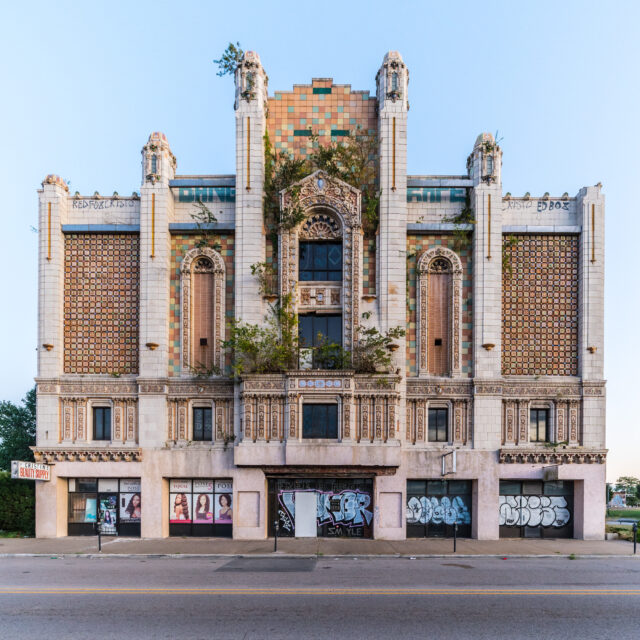
The Majestic Theater in East St. Louis, Illinois, opened in 1928 as a luxurious entertainment hub designed by the Boller Brothers in a Spanish Revival style. It quickly became a landmark of the city, hosting a variety of vaudeville performances, silent films, and, later, “talkies.” It boasted a grand marquee, elaborate interior, and seating for over 1,700 guests. However, as the city faced economic decline and social challenges in the latter half of the 20th century, the theater struggled to attract audiences and eventually closed in the 1960s. Despite its listing on the National Register of Historic Places, the Majestic Theater has remained abandoned.
Victory Theater, Holyoke, Massachusetts, USA
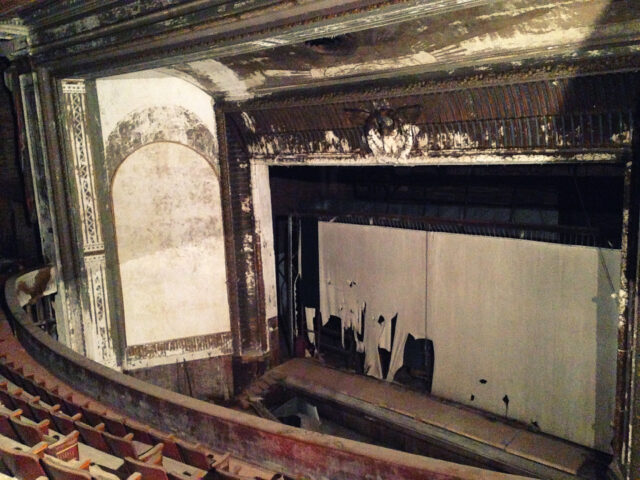
The Victory Theater in Holyoke, Massachusetts, opened in 1920 as a grand vaudeville and movie house. It was designed by architect Louis J. Giroux, and the theater featured lavish decor, including ornate plasterwork and a spacious auditorium that could seat 1,600 patrons. Over the decades, the Victory Theater evolved from hosting vaudeville acts and silent films to showcasing talkies and, later, live performances. However, like many similar venues, it struggled to compete with the rise of television and suburban cinemas, leading to its closure in 1979. Despite various efforts to revive the theater, it has remained abandoned.
Eden Cinema, Tel Aviv, Israel
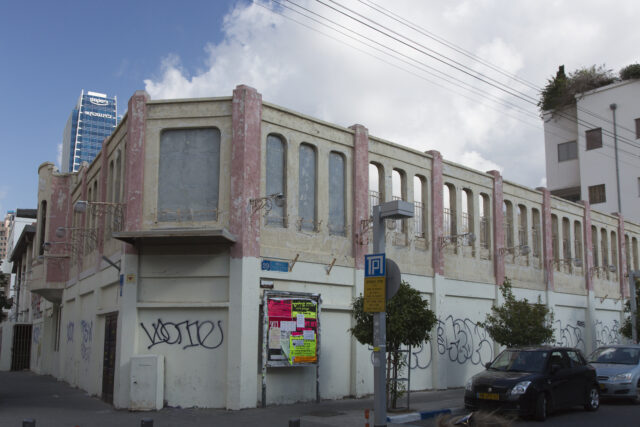
Eden Cinema, opened in 1914, was Tel Aviv’s first movie theater and a significant landmark in the early days of the city. Located in the bustling Neve Tzedek neighborhood, it was founded by Moshe Abarbanel and featured an open-air courtyard that allowed audiences to enjoy films under the stars. As Tel Aviv grew, Eden Cinema adapted to changes in film technology, transitioning to sound films and expanding its programming. However, by the 1970s, competition from modern cinemas and shifts in entertainment preferences led to its decline, and the theater eventually closed its doors in 1974. Despite being a cherished part of Tel Aviv’s history, the building was left abandoned for years.
Proctor’s Palace Theater, Newark, New Jersey, USA
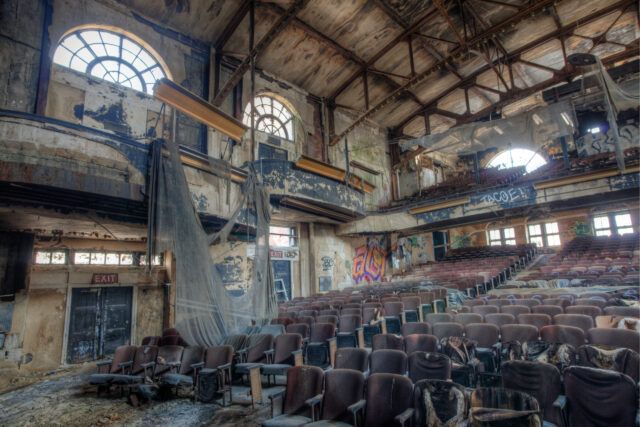
Proctor’s Palace Theater in Newark, New Jersey, was a premier entertainment venue that opened in 1915, part of the vaudeville circuit operated by F. F. Proctor. The theater comprised of two stages: one for vaudeville acts and another for film screenings, making it one of the earliest and grandest “double-decker” theaters in the country. Designed by architect John W. Merrow, it featured opulent decor with lavish chandeliers, intricate plasterwork, and a seating capacity of over 2,800. However, as vaudeville declined and suburban movie theaters rose in popularity, Proctor’s struggled to adapt. It eventually closed in 1968 and was abandoned, its halls left to deteriorate until the building was demolished in 1981, marking the end of an era for Newark’s downtown entertainment scene.
The New Victoria/Odeon, Edinburgh, Scotland, UK
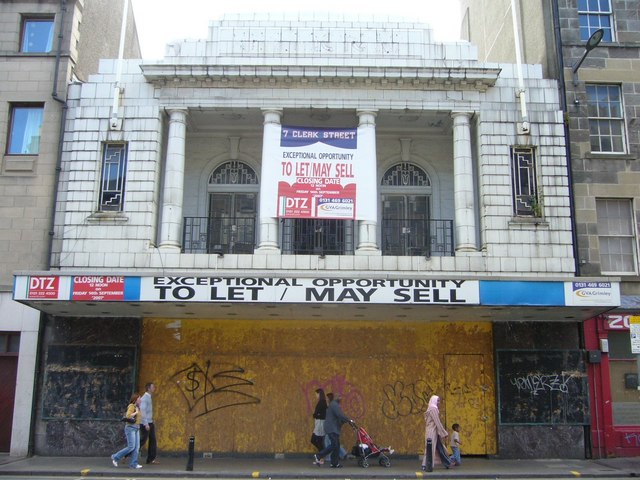
The New Victoria, later known as the Odeon, was a grand cinema that opened in Edinburgh, Scotland, in 1930. Designed by architect William E. Trent, it featured an Art Deco style with luxurious interiors, including ornate plasterwork and a grand auditorium that could seat over 2,000 people, making it one of the largest cinemas in Scotland at the time. It was rebranded as the Odeon in 1964, but as multiplex cinemas began to dominate the market, the Odeon struggled to maintain its audience. It eventually closed in 2003, despite being recognized as a Category B listed building for its architectural significance. After years of neglect and failed redevelopment plans, the theater was ultimately abandoned.
Plaza Cinema, Port Talbot, Wales, UK
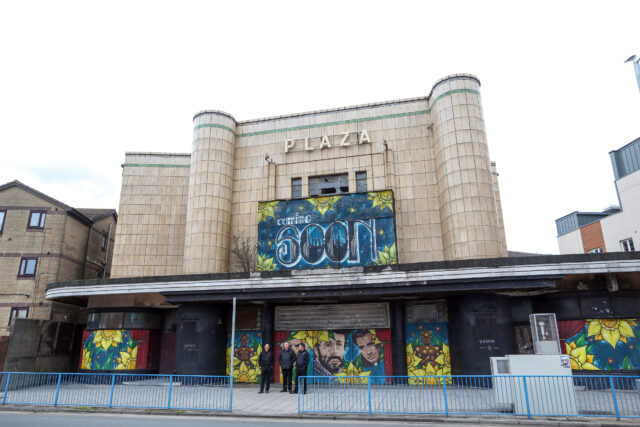
The Plaza Cinema Theater in Port Talbot, Wales, opened in 1940 and served as a prominent entertainment venue during World War II and beyond. Designed in the Art Deco style, the theater could accommodate over 1,000 patrons, screening the latest films and hosting various live performances. However, like many traditional cinemas, the Plaza struggled with the rise of television and changing entertainment habits. Despite efforts to keep it running, the theater closed in 1983 and was subsequently left abandoned. Over the years, the Plaza Cinema had fallen into disrepair, but has since been repaired and now is host to a variety of amenities.
Derby Hippodrome, Derby, England, UK
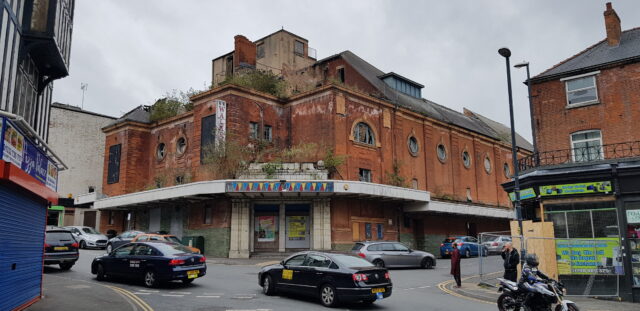
The Derby Hippodrome in Derby, England, opened in 1914, designed by renowned theater architect Frank Matcham. Initially serving as a variety theater, it hosted a mix of vaudeville acts, plays, and even early cinema screenings. The Hippodrome transitioned to a full-time cinema in the 1930s as the popularity of live performances waned. In the post-war years, it continued to operate as a bingo hall from the 1960s until its closure in 2007. After its closure, the Derby Hippodrome suffered from neglect and vandalism, with parts of the building severely damaged in an unauthorized demolition attempt in 2008. Efforts to restore the Hippodrome have faced numerous setbacks, leaving it abandoned and in a state of disrepair.
The George Cinema, Edinburgh, Scotland, UK
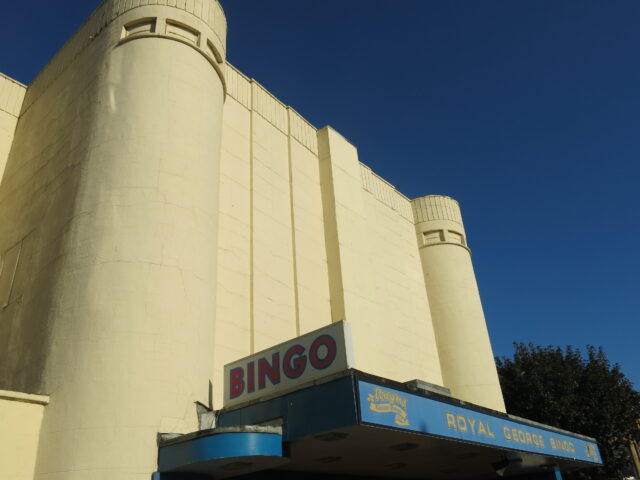
The George Cinema in Edinburgh, Scotland, opened in 1939 on Bath Street in the Portobello area, designed by James McKissack. It featured a striking Art Deco facade and an elegant interior with a single auditorium that could accommodate over 1,500 people. The George Cinema quickly became a popular spot for filmgoers, showing the latest releases, but like many independent cinemas, it struggled to compete with the rise of television and, later, multiplexes. The George ceased operations as a cinema in the 1960s and was briefly used for bingo before closing entirely.
Reel Cinema, Plymouth, England, UK
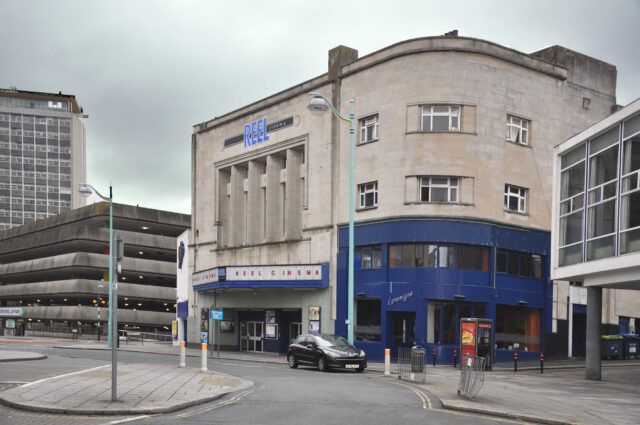
The Reel Cinema in Plymouth, England, opened in 1938 as a prominent movie theater featuring a grand auditorium that could accommodate over 2,000 patrons. It quickly became a popular venue for film enthusiasts, showcasing the latest releases and classic films in a stylish setting. The Reel Cinema remained a cherished part of Plymouth’s cultural landscape for several decades, but as the cinema industry evolved, the Reel struggled to maintain its audience. It eventually closed in 2019 and has been abandoned, but new plans are in the works to restore the venue for live performances.
Regal Cinema, London, England, UK
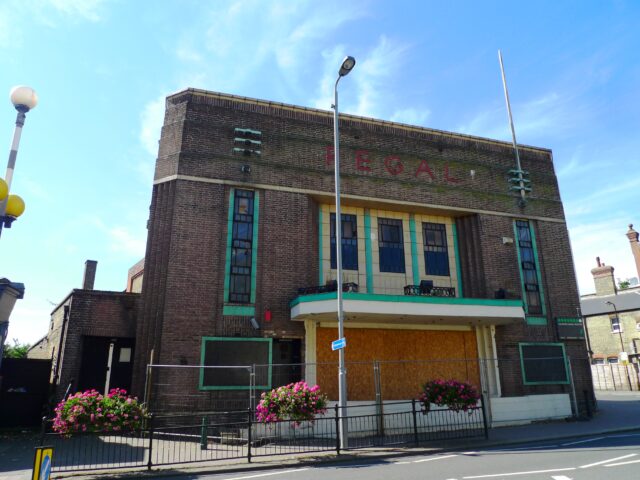
The Regal Cinema in London, England, opened in 1934 as a lavishly designed movie palace with a capacity of over 1,800 seats. Located on the bustling Edgware Road, it quickly became a popular venue for film screenings and live performances, known for its ornate interior and grand facade. Over the decades, the Regal Cinema continued to attract audiences with its mix of cinematic and theatrical presentations. However, as television and multiplex cinemas began to dominate the entertainment industry, the Regal struggled to compete. It ceased operations in the early 1980s and has since remained abandoned.
Loew’s Majestic and Palace Theater, Bridgeport, Connecticut, USA
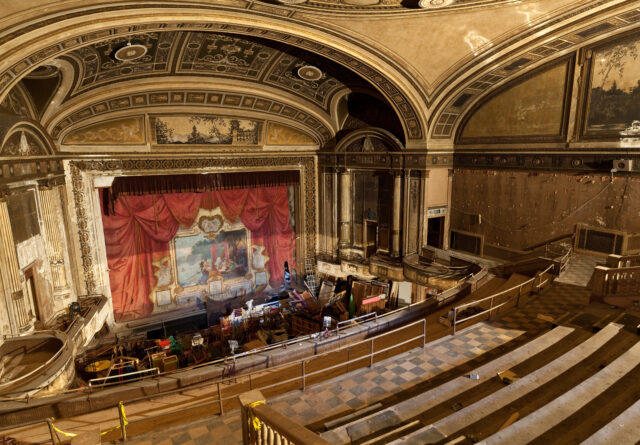
Loew’s Majestic and Palace Theater in Bridgeport, Connecticut, opened in 1920 as a grand entertainment venue designed by architect Thomas W. Lamb, featuring an opulent Beaux-Arts style with a capacity of over 3,000 seats. It was initially a cornerstone of vaudeville and silent film entertainment before transitioning to a showcase for talkies and major cinematic releases. However, over time, Loew’s Majestic and Palace struggled to maintain its audience. It closed its doors in 1975 and has fallen into disrepair since.
Astra Cinema, Verona, Italy
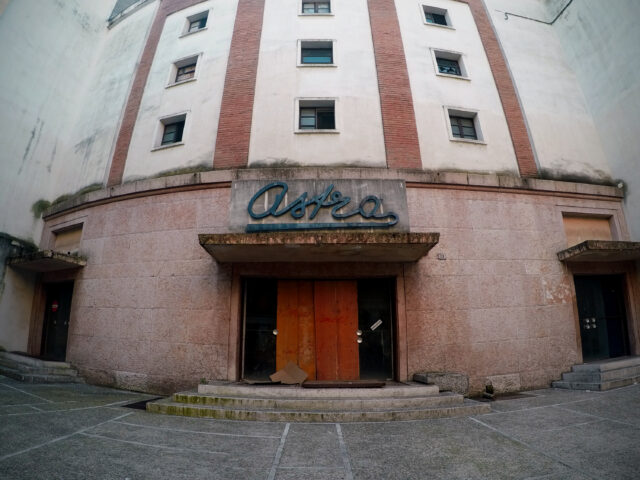
The Astra Cinema in Verona, Italy, opened in 1937 as a distinguished movie theater with a capacity of over 1,000 seats. It quickly became a cultural hub in Verona, known for its stylish ambiance and diverse film programming. The Astra Cinema remained a popular venue throughout the mid-20th century, showcasing both Italian and international films. However, as the cinema landscape evolved with changing viewing habits, the Astra struggled to compete. It closed in the early 2000s and has since been abandoned.
Regent Cinema, Deal, England, UK
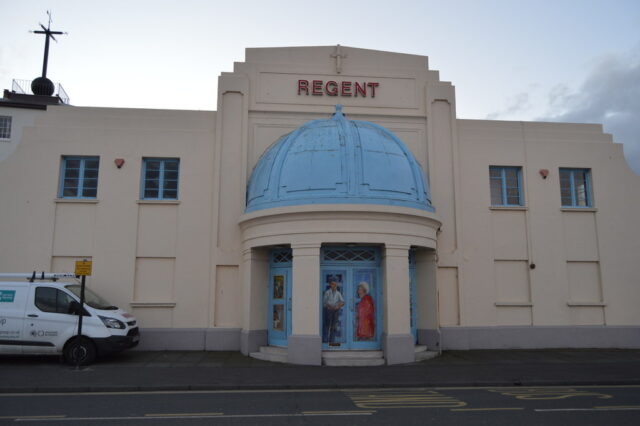
The Regent Cinema in Deal, England, opened as a cinema in 1933 as a prominent movie theater capable of seating over 1,000 patrons. It quickly became a beloved local venue, showcasing a range of films from the latest releases to classic features. The Regent Cinema enjoyed a strong following for decades, serving as a central entertainment hub for the community. However, with the rise of multiplex cinemas, the Regent faced declining attendance and transformed into a bingo hall in the 1960s, eventually closing its doors for good in 2009. Despite efforts to revitalize the building, it has fallen into disrepair and has remained abandoned ever since.
Aegidium Theater, Brussels, Belgium
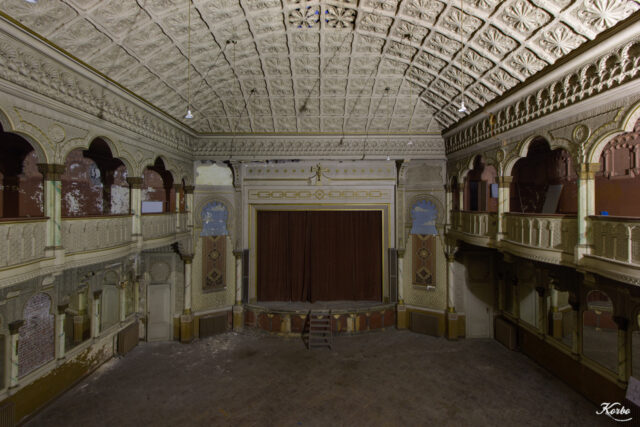
The Aegidium Theater in Brussels, Belgium, opened in 1906, known for its elegant architecture and diverse programming, including film screenings, theatrical performances, and concerts. The theater quickly became a prominent cultural landmark in Brussels, attracting audiences with its sophisticated ambiance and high-quality entertainment. However, as entertainment preferences shifted and newer venues emerged, the Aegidium struggled to maintain its audience. It closed in 1985 and has since been abandoned.
Empress Theater, Montreal, Quebec, Canada
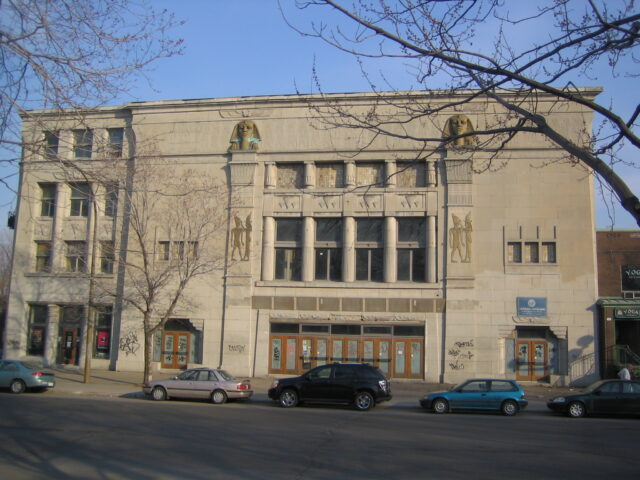
The Empress Theatre in Montreal, Quebec, opened in 1927 as an opulent movie palace designed by architect John Schofield, featuring a lavish interior. Renowned for its elegant Beaux-Arts architecture and state-of-the-art facilities, the Empress quickly became a premier venue for film and live performances in Montreal. It hosted a variety of events, including silent films, talkies, and stage shows, becoming a cultural cornerstone in the city. However, over the decades, the Empress Theatre struggled with declining attendance and was forced to close following a fire in 1992.
